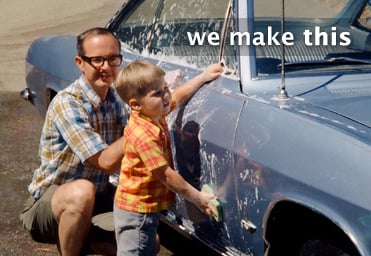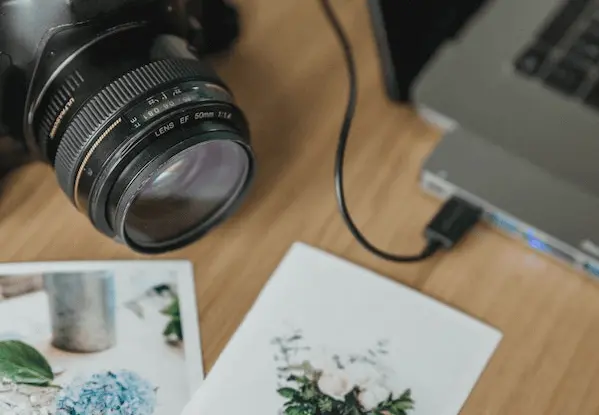The 3-Step Approach to Taming and Organizing Your Photo Clutter
In the days of film cameras, taking a picture was a measured activity that few got carried away with. Most people made three to four attempts at capturing an image, experimenting with a few shutter speeds and aperture settings in the process. The hope was that one of those attempts would yield the perfect shot. Times have definitely changed since those days of photographic moderation. Digital now allows people to take as many photos as there is space on their devices. There's no need for restraint any more. Which is why most of us are now at the point where we are drowning under the weight of hundreds or even thousands of digital photos and wondering how to get started with organizing this photo collection.
Before starting a project like this, it can seem daunting - a bit like being at the foot of a tall mountain you're trying to scale. It's hard to know where exactly to begin. But like with a physically challenging climb, it all starts with getting a foothold somewhere and then making your way up slowly and methodically. The end goal is to have all (or almost all) your photos in one digital photo hub from where you can view, curate and share images easily. When you get to this point, you will know you are close to conquering your photo clutter.
There are three main steps involved in this process, although each of these may include multiple smaller ones.
Consolidate your collection
The first step is to pull everything together or to consolidate your collection as much as possible. This part is not as simple as it sounds because most of our digital photos are scattered across a few different places. Some are saved on computer hard drives, others are on external backup including flash drives, while many just don't make their way out of our phones.
Print photos, of course, present a whole new problem. Not only are they spread across shoeboxes and other containers, but they also need to be digitized before you can easily work with them. Of course, it's possible to scan photos at home (if that is your idea of a stimulating weekend activity) but you can definitely save yourself time and trouble if you use a professional scanning service to convert your boxes of prints to digital. It will allow you to conserve your energy for the real work ahead.
As you’re consolidating, anticipate your future storage needs. Don't place yourself in a preventable bind by moving them to a digital home with only a few gigabytes of space. Choose a drive or location with enough storage to tide you over for the foreseeable future.
Cull, sort, organize and curate
There are probably many images in your consolidated digital library that are not worth holding onto. Even as you go through recently digitized photos, you may find many duplicates, blurry shots, or photos of places or subjects that are not tied to any significant memory. Now is a good time to jettison these by moving them into your computer's trash bin.
After this round of cleanup and editing, you should spend some figuring out how you want to sort and organize your photos. You can group them based on chronology, place, occasion or any other grouping that makes sense to you. You can also upload your photos to a photo storage and management site such as Google Photos that comes with several tools to help you make the most of your memories. For instance, with Google Photos, you can apply various filters -- of place, person, time and more -- to your library and create tailored albums, videos and collages for specific occasions.
Backup, backup and backup
It's hard to overemphasize the importance of this step. Computer drives are known to crash and are sometimes irrecoverable. And so, it's essential that you backup your entire image library on a separate external drive. But to doubly secure your memories, you should also upload them to a cloud-based storage site. There are several affordable options now from the likes of Google, Apple and Amazon. You can read more some of these options here.
A large-scale and comprehensive photo organization project is not something that you can wrap up over a weekend. However, there are ways to ease and expedite the process by outsourcing some parts, such as photo scanning and restoration, to a reliable service. But if you realize that you can't get it all done in a day or even a few days, you will start to enjoy the process even as you look forward to the end result. And that result -- of making a lifetime of photographic memories wonderfully accessible -- will definitely be worth your investment of time and money.
Value kit as low as $0.34 Per Scan
"Not in a hurry? Have only standard media? Don't need our Pay for What You Want feature? Our Value Kit, starting with 500 scans, is just for you!"
Learn More
How To Articles
- How to Digitize VHS Tapes
- How to Scan Slides and Negatives
- How to Create Striking Photo Displays in Your Home
- How to Transform Digitized Pictures into Unique Photo Gifts
- How to Convert Old Kodachrome Slides to a Digital Format
- Converting 8mm Film to Digital: A History and How-to Guide
- How to Bulk Scan a Large Photo Collection
- How to Convert and Secure Your VHS Tapes
- The 3-Step Approach to Taming and Organizing Your Photo Clutter
- How to Upload Files to Google Drive, Amazon, and Dropbox
- How to Transfer 16mm Film to Digital
- How to Access Thumb Drive Files
- How to Open a Zip File on Windows and Mac









